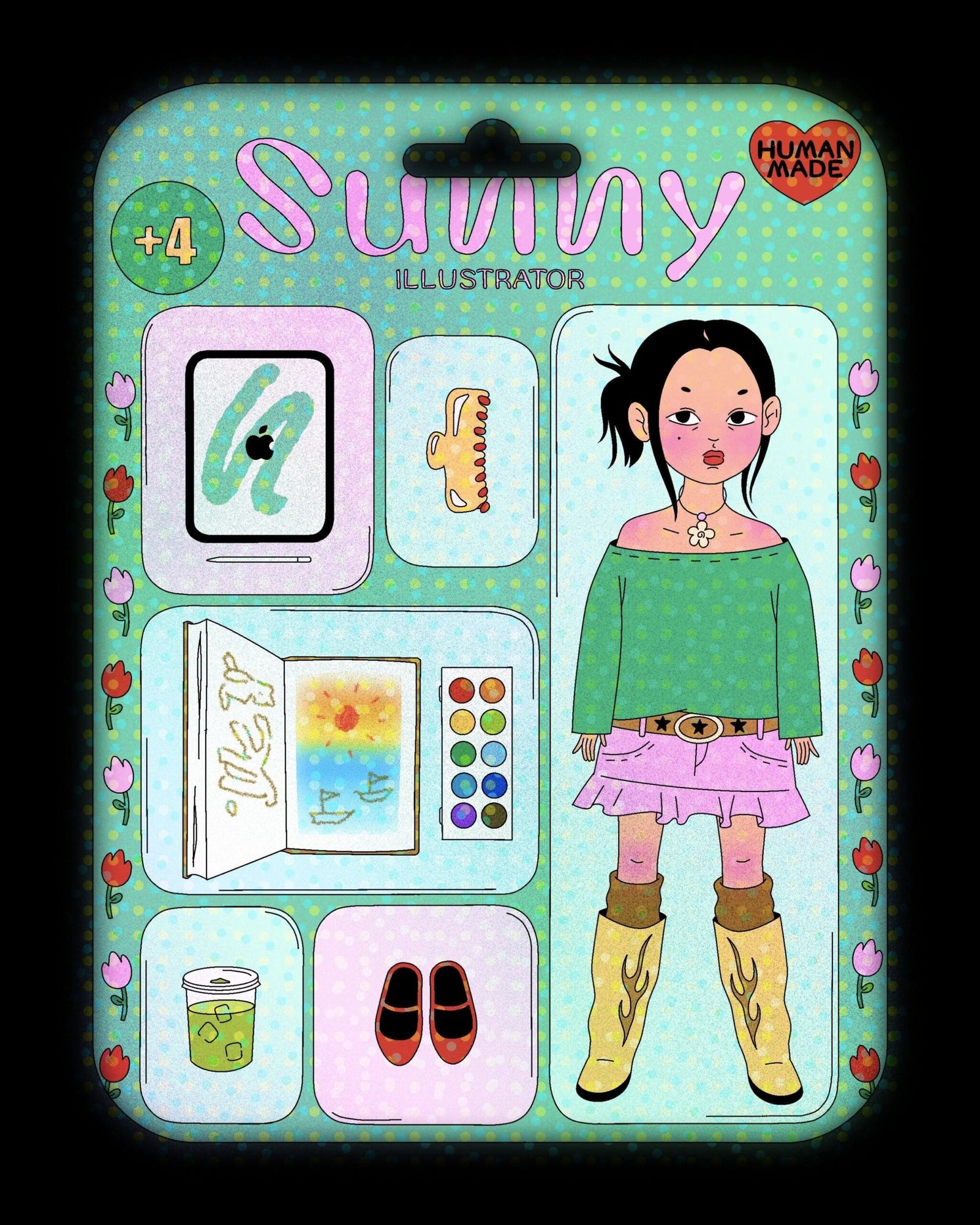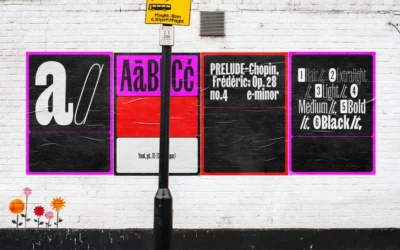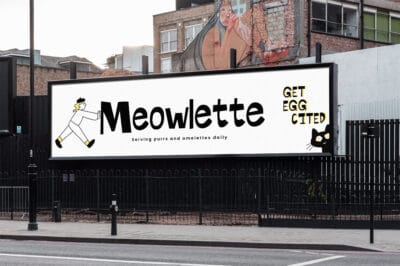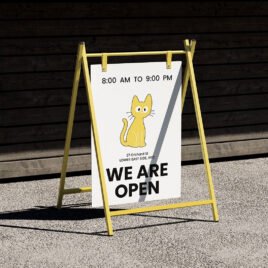As AI-generated dolls become increasingly prevalent on social media, illustrators are reclaiming their creative spaces with hand-drawn alternatives that celebrate the essence of human artistry.
If you’ve been active on social media lately, you’ve likely encountered a peculiar trend where individuals create images of themselves as action figures or dolls using AI tools like ChatGPT. These digital renditions—often portraying users as plastic-packaged toys complete with accessories—have gone viral, attracting the attention of brands eager to capitalize on this craze.
However, not everyone is enthusiastic about AI’s rise. In response, a counter-movement has emerged from the creative community, branded with the hashtag #StarterPackNoAI. This initiative encourages artists to craft their own hand-drawn interpretations, showcasing the value of creative expression and the unique qualities of human artistry.
The Backstory
The trend of AI-generated dolls gained popularity when users discovered they could upload selfies to AI platforms, resulting in plastic-like, packaged versions of themselves. These images quickly flooded platforms like LinkedIn, Instagram, and Facebook.
While some find the novelty amusing, many illustrators and creative professionals express concerns over the environmental impact of AI image generation, copyright issues, and the diminishing value of their artistic skills.
Illustrator and graphic designer Lizzie Knott emphasizes the importance of showcasing the work of real artists rather than relying on AI. “It’s crucial to amplify the contributions of actual humans, especially when AI generates art using more energy than it takes for me to create something unique,” she states.
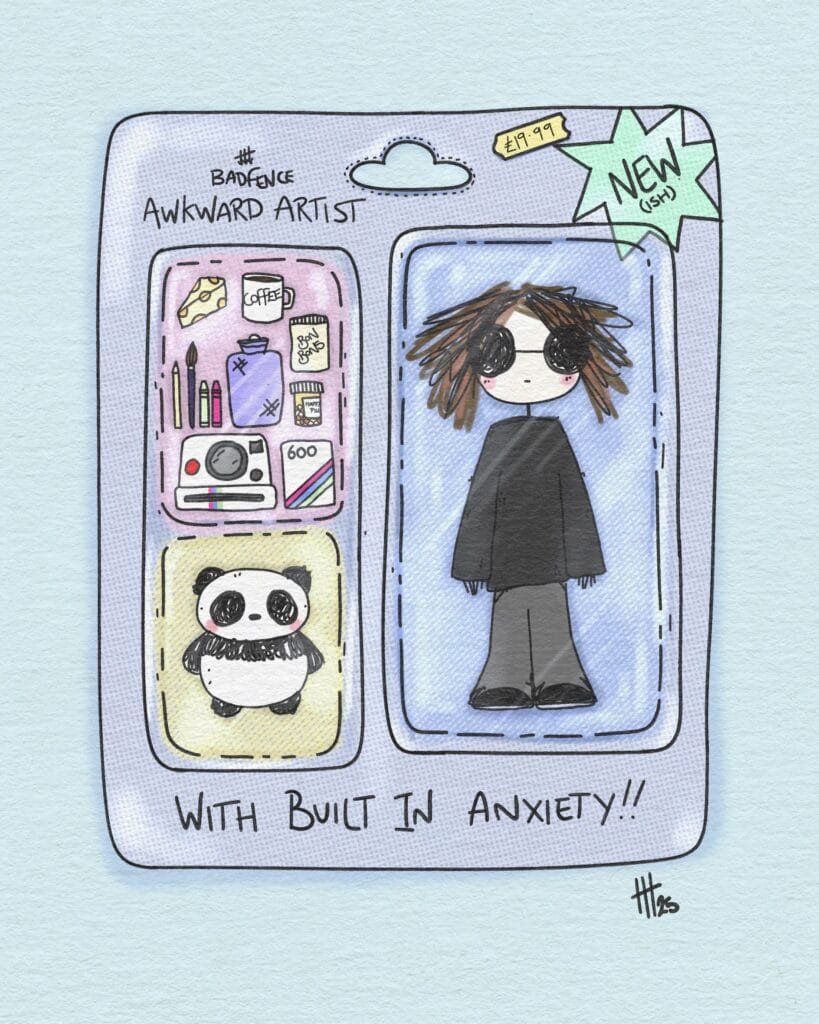
Photographer and illustrator Jemma Bannocks shares her discontent with AI’s influence on media literacy, noting that its presence in photography exhibitions is particularly troubling. “Illustrating is a more lighthearted outlet for me, and it feels right to contribute to this movement,” she explains. “AI seems to be used to cut costs, sidelining genuine creatives.”
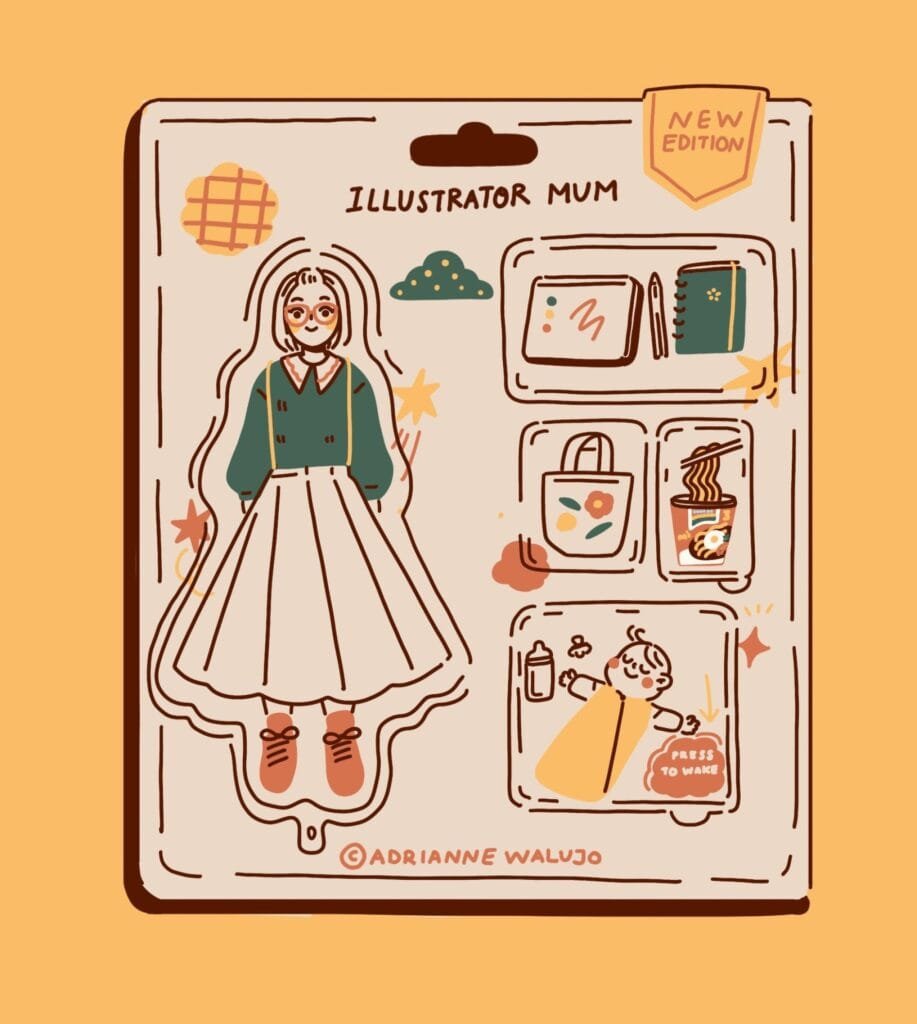
Adrianne Walujo, another artist, notes, “People are drawn to AI art because it seems like a shiny new toy. However, true art resonates with the heart, inspiring others to create. AI-generated art is often designed for consumption rather than inspiration.”
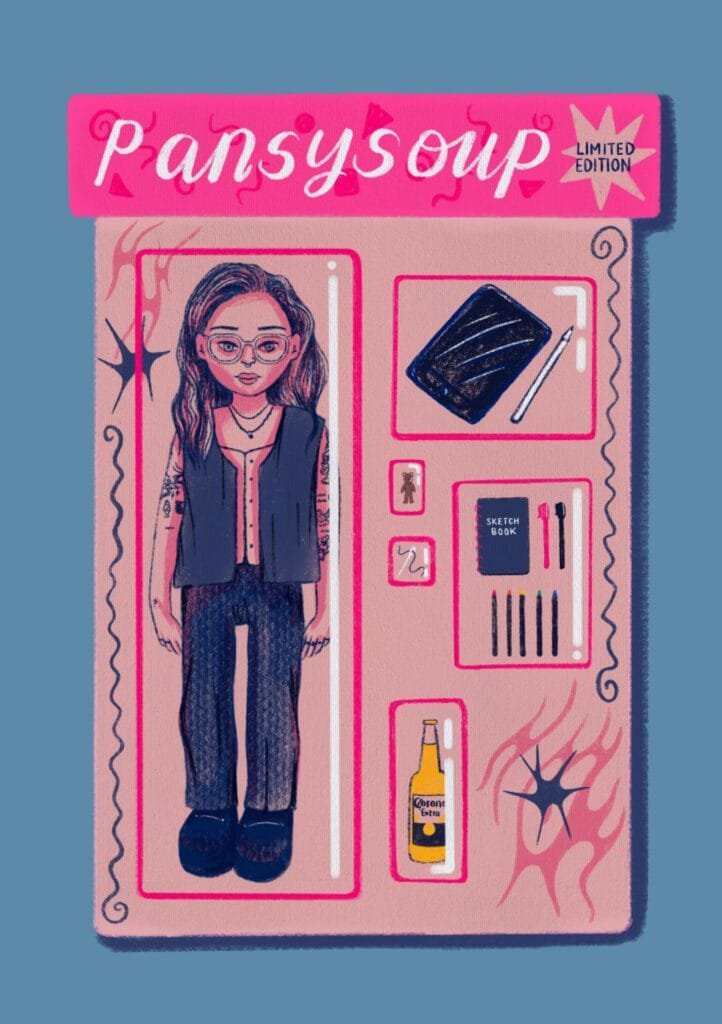
Caroline Murphy expresses her motivation to create her own version of the doll starter pack, citing the environmental concerns associated with generative AI. “Everyone’s AI dolls look the same, lacking individuality and creativity. It’s refreshing to see artists put their unique spin on this trend.”
The illustrator-led response has rapidly gained traction, with hundreds of artists sharing their hand-drawn creations. Unlike the uniformity of AI-generated images, which can quickly become monotonous, each #StarterPackNoAI piece reflects the artist’s unique style, personality, and brand identity.
For many artists, this trend signifies more than just a creative outlet; it underscores the importance of human artistry in an increasingly AI-driven world. Illustrator Rosie Wilson points out the emotional depth in handmade art. “AI figurines can feel soulless, while illustrated versions are full of character and life,” she notes. “Even a simple stick figure can be more engaging.”
This sentiment is echoed by Francesca Grech, who observes, “The handmade creations stand out because of the personality evident in each piece. AI lacks that uniqueness; it’s easy to connect with an artist and collaborate to produce something special.”
Genuine Craftsmanship
The movement has fostered a sense of community among artists navigating the uncertain landscape shaped by AI image generators. Illustrator Penny Fournier describes it as “a delightful trend that highlights individuality and quirks. It’s unfortunate that brands are resorting to AI for emulation, transforming a bonding experience into a marketing tactic.”
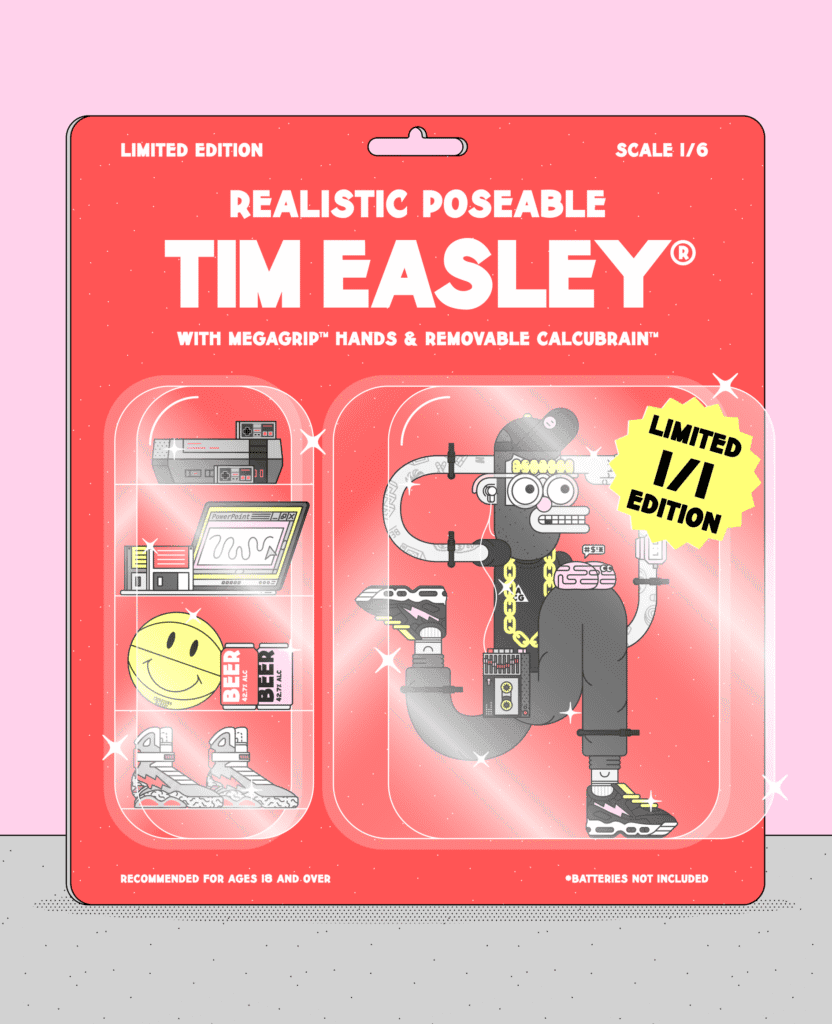
Tim Easley adds, “I appreciate the ChatGPT versions, but witnessing the diverse interpretations from various artists is a reminder of the immense talent out there.”
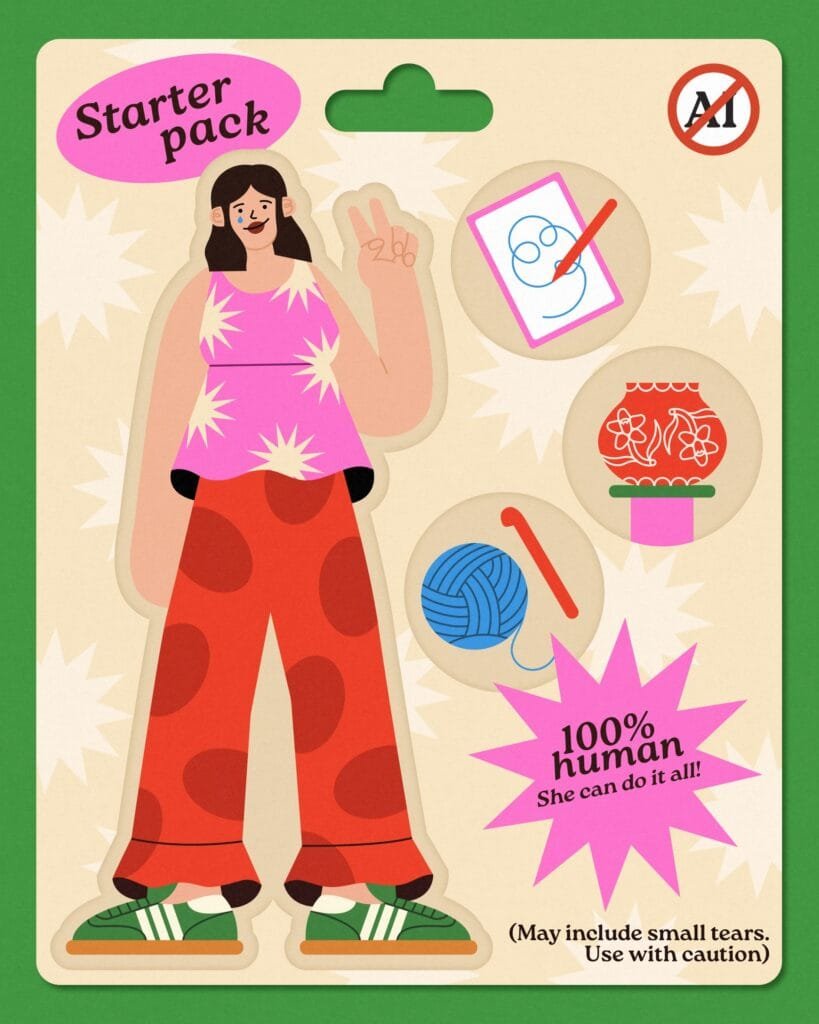
Illustrator Tete Garcia shares her frustration with the impersonal nature of AI starter packs, stating, “After seeing too many generic designs, I decided to create my own, filled with style and personality.”
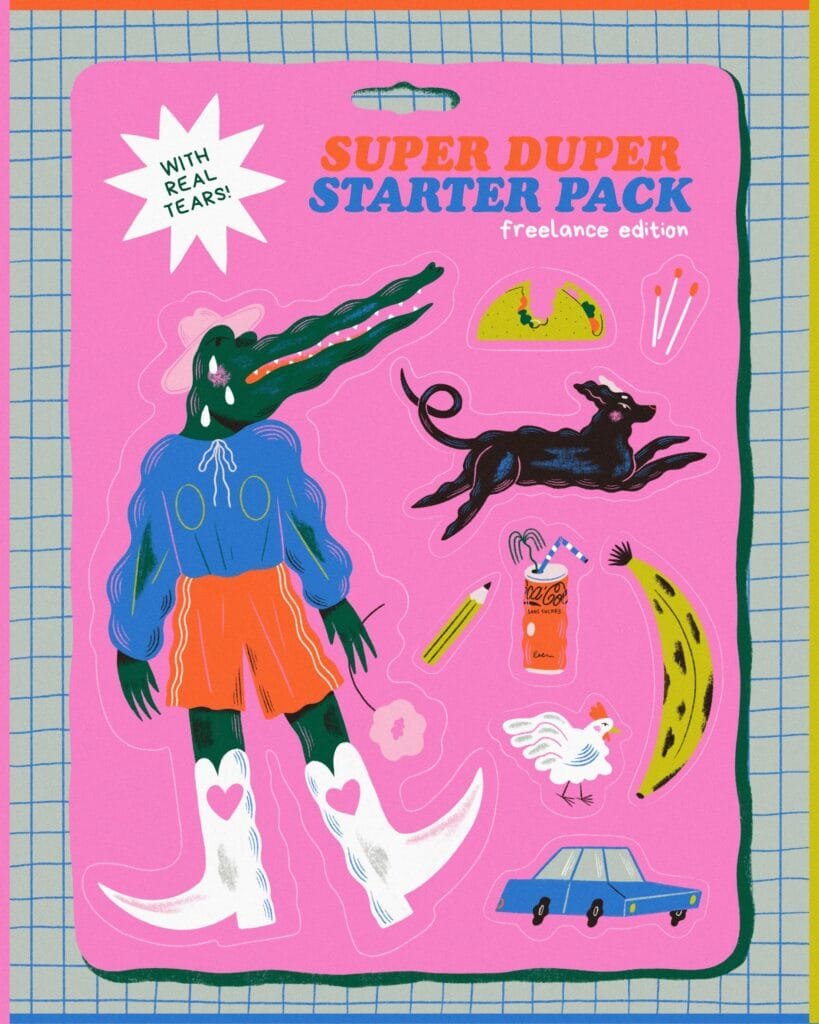
Clara Dupré emphasizes that AI-generated dolls fail to capture the rich diversity of human personalities. “The polished images of AI dolls don’t reflect the unique traits that make our world beautiful,” she says.
Holly Farndell finds inspiration in the trend, noting the creative community’s response to a shared challenge. “The variety of styles and interpretations reveals so much about individuals and their preferences for their ‘starter packs,'” she says.
Conversely, illustrator Graeme Daly expresses frustration with the sameness of AI-generated images. “When you search for this trend on Instagram, you see countless identical figurines. Everyone is unique, so why would you want to blend in with such uniformity?”
A Stand Against Artistic Theft
For some illustrators, creating their own starter packs is a form of protest against what they perceive as the appropriation of artistic techniques. Carrie Cantwell, an illustrator and surface pattern designer, explains, “The viral AI trends diminish the value of art. The Ghibli trend was a blatant theft, and this action figure trend feels similarly unsettling. It’s disheartening to see people generating ‘art’ by simply uploading a photo and pressing a button.”
Creative designer and illustrator Courtney Summer Myers succinctly states, “If you can’t create something yourself, you should fairly compensate someone who can. If you can’t do that, then don’t pursue it at all.”
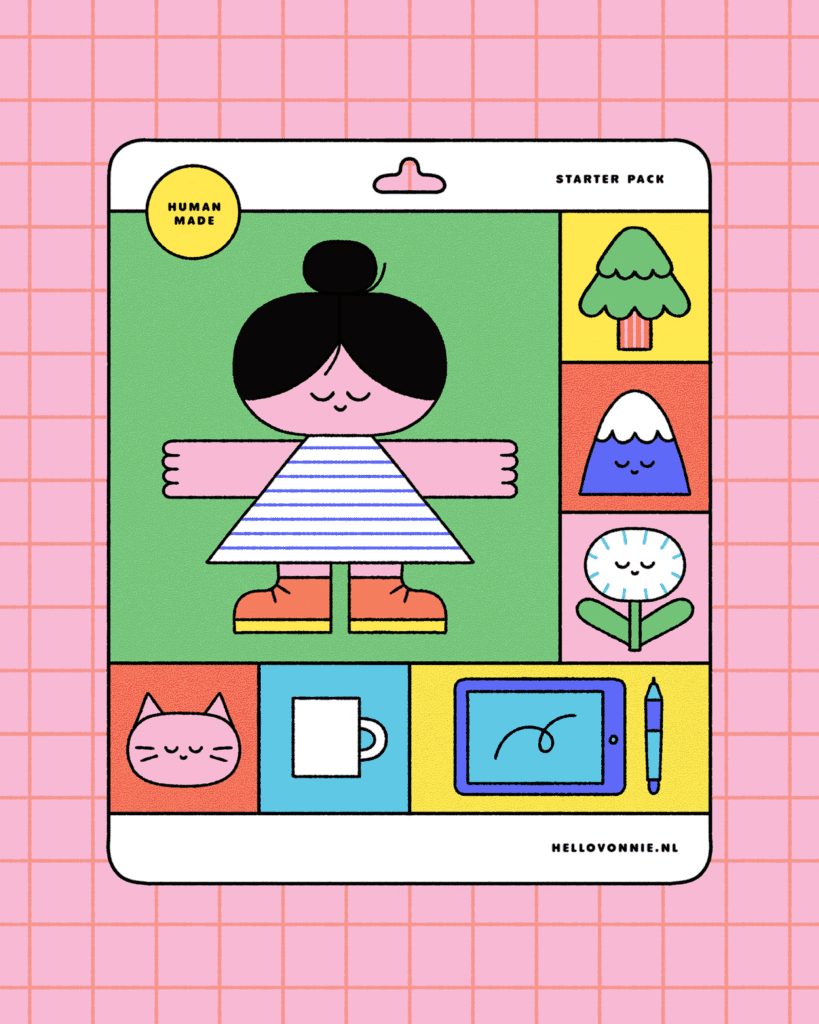
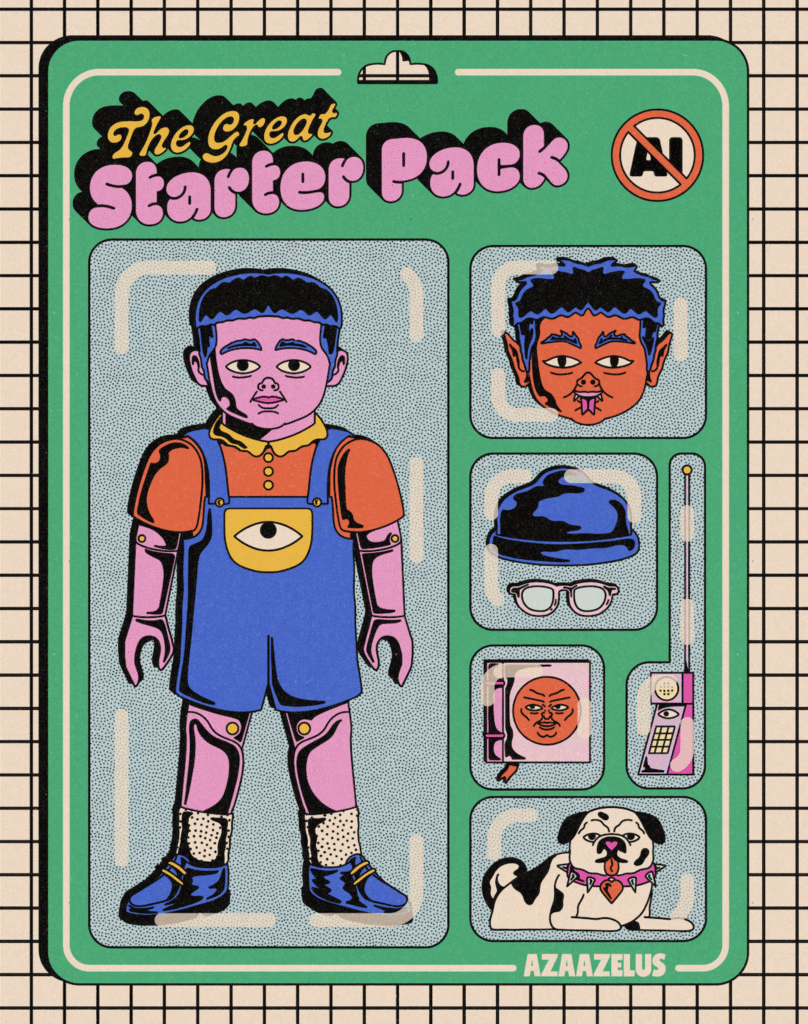
The #StarterPackNoAI movement has also sparked discussions about the environmental implications of AI image generation. With growing awareness of the significant energy consumption associated with AI systems, participants advocate for hand-drawn alternatives as a more sustainable choice.
Infused with Personality
Alice Jones Fjordside, a visual communication and interactive design student, highlights the differences in impact between the two approaches. “The first AI-generated image may be fun, but it quickly loses its appeal. In contrast, I find it enjoyable to see the handmade illustrations in this trend, as they are infused with the artist’s personality,” she explains.
As the #StarterPackNoAI movement continues to grow, it stands as a creative and constructive response to the challenges facing artists in the era of generative AI. Rather than merely criticizing the technology, illustrators are showcasing the irreplaceable value of human creativity through their work, demonstrating that while AI can imitate, it cannot replicate the unique touch of an artist’s hand or the authentic expression of human experience.
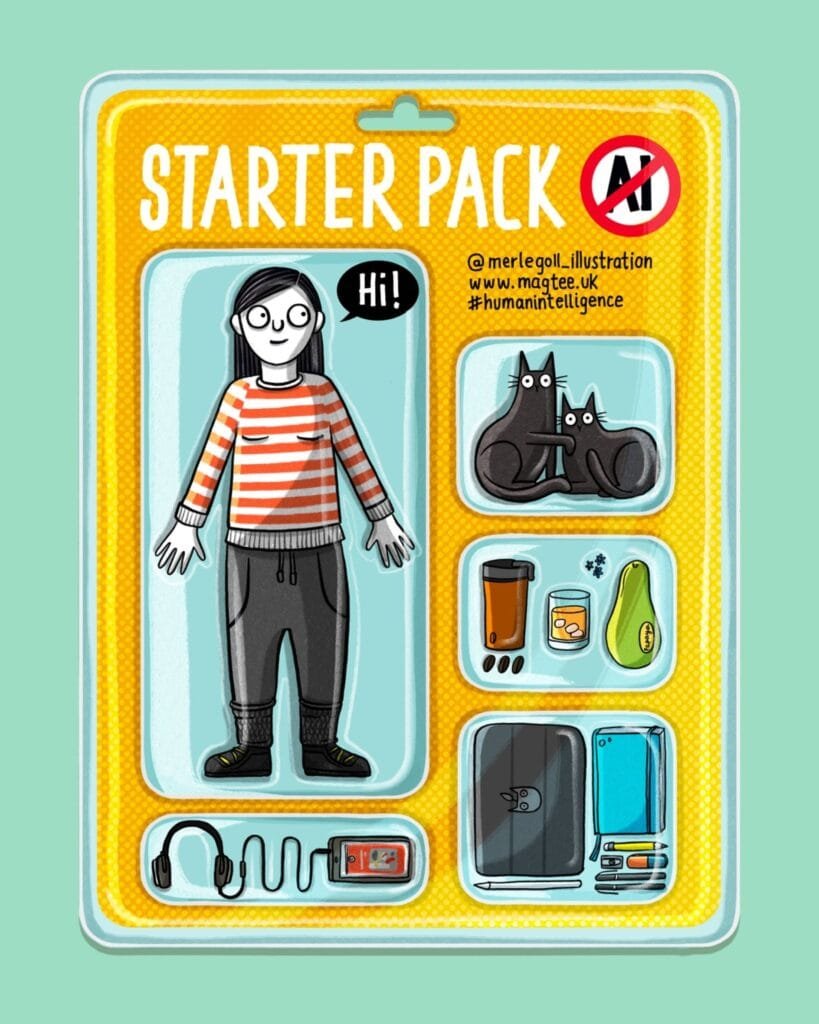
Illustration by Merle Goll
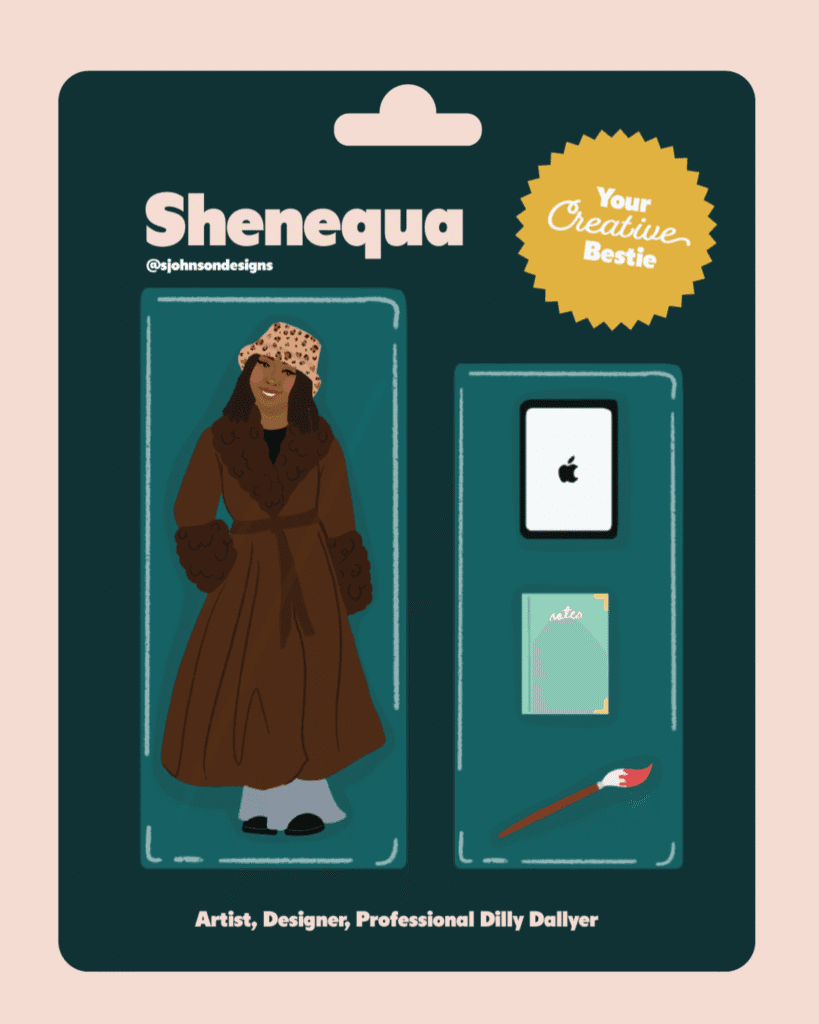
Illustration by Shenequa Johnson
Graphic designer and content creator Callum McHugh captures the sentiment best: “It’s heartening to witness this reaction from artists against the plastic AI figures; it feels very healing.”
A Personal Reflection
Finally, designer and illustrator Laura Soto Salazar summarizes the movement’s essence: “I created this illustration as a means of reclaiming space in response to what I view as a dangerous erosion of human creativity and the significant environmental costs associated with large-scale AI systems. These systems have been built by absorbing the life’s work of real artists, writers, and photographers who have spent years developing their unique styles without ever being compensated or credited. The result? A machine produces content, but not art—mass-produced, sterile, and devoid of soul.”
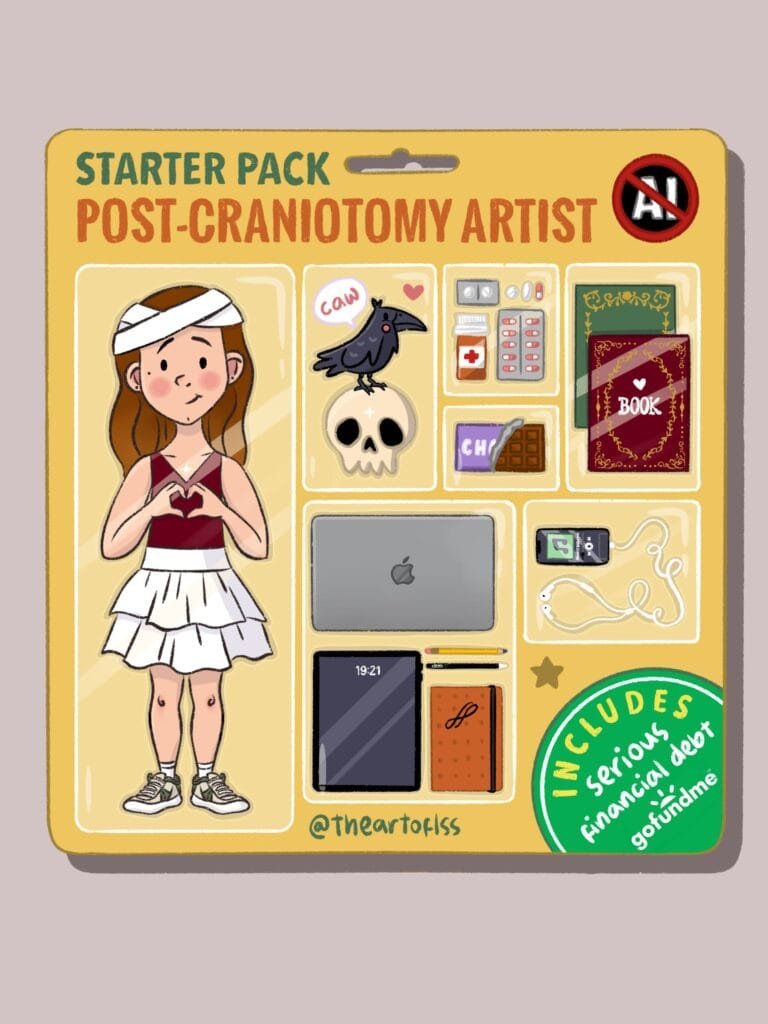
She adds, “I believe AI can be incredibly beneficial when used for noble causes, but when it replaces art born from lived experiences, it crosses a line. What makes human-made art irreplaceable is the vulnerability, joy, and struggle poured into it.”
“At this moment, I am navigating a complex situation, including health challenges and job loss. I needed to create and laugh, to show up for myself. This piece represents survival, and no algorithm can replicate that. Support human-made art because robots don’t have rent or emotions.”
Visit Brandlic for the latest news and updates on product design, branding, and storytelling trends
